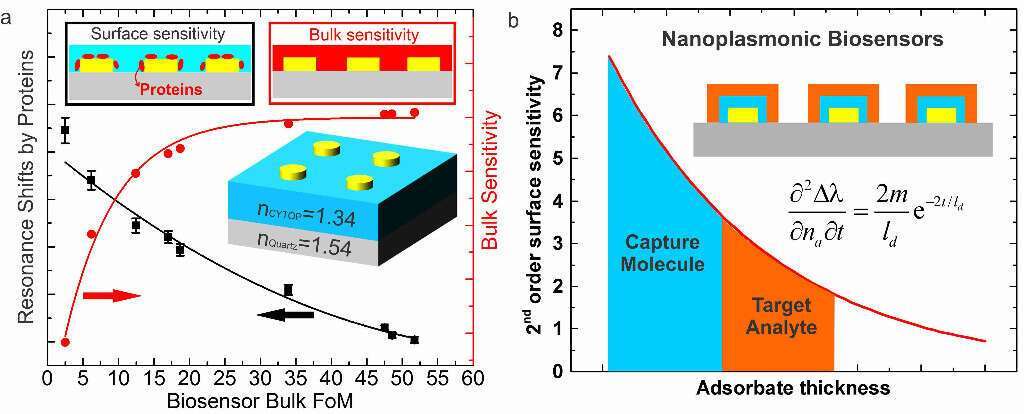
Design Rules for Nanoplasmonic Biosensors: Distinguishing Bulk and Surface Sensitivities
Nanoplasmonic biosensors leverage the signal of refractive index changes upon the interactions of biomolecules with the highly enhanced surface electric field. Conventionally, the sensing figure of merit (FoM) is defined as the bulk sensitivity divided by the resonance linewidth for the biosensor evaluation. This suggests that a reduction of the linewidth should yield an increase of the sensor performance, which, on its own, is not so trivial for nanoplasmonic structures. Moreover, it is also not clear whether the bulk sensitivity is always a good measure for refractive index changes that only occur in a confined region near the nanostructure surface.
In this presentation, we first demonstrate how to achieve narrower than 10 nm linewidth in aqueous medium for practical biosensing applications by using a CYTOP cladding in diffractively coupled plasmonic crystals. Employing a protein bilayer model, we further show that the bulk sensitivity and the actual protein binding induced signals follow an opposite trend for varying FoMs (Figure 1a). Detailed finite-different time-domain simulations confirm that the reason lies in the inadequate description of the surface sensing capacity by the bulk sensitivity.
In order to thoroughly investigate the surface sensitivity, we take the atomic layer deposition of conformal Al2O3 layers with well-defined thickness and refractive index on the nanostructure surface, and monitor the corresponding resonance shifts with respect to the coupling strength of the plasmonic crystals. A new definition of surface sensitivity is thus recommended, which relates to both the thickness and refractive index of the adsorbate (Figure 1b). The new surface sensitivity exponentially decays from the nanoplasmonic structure surface, and clearly correlates to the bulk sensitivity by the decay length. It could also give insight into optimized biosensor evaluation. Our method is generic and can be applied to other nanoplasmonic systems.

Powered by Eventact EMS